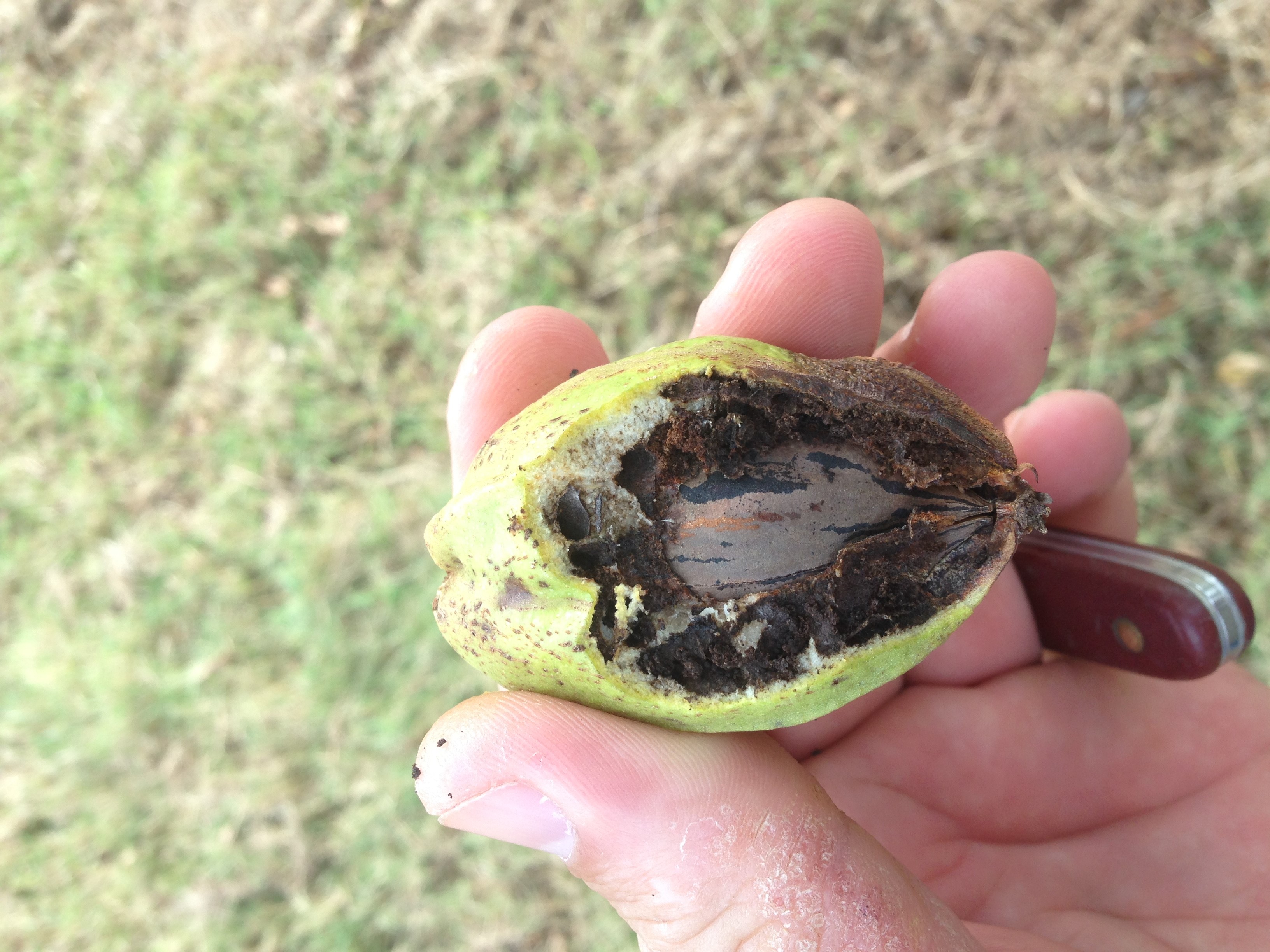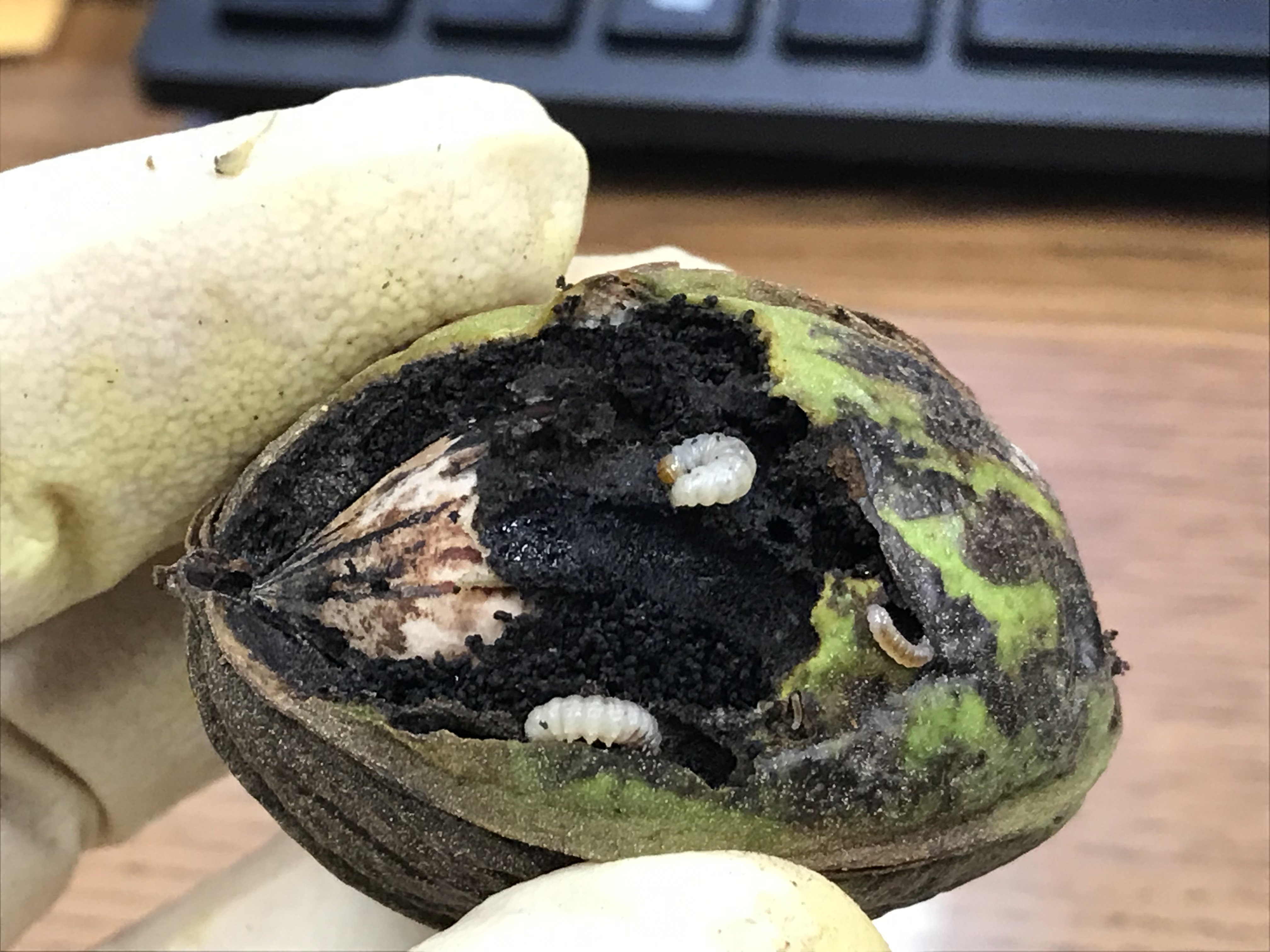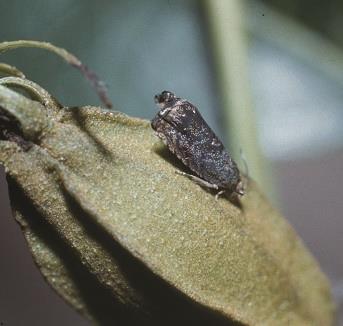Insect Gallery
Insect Details
Hickory Shuckworm
Clydia caryana
The adult hickory shuckworm is a small, grayish colored moth about 3/8 inch long with a wing span of approximately 1/2 inch. They often rest on nut clusters or foliage close to clusters. The immature larvae are small white caterpillars. Full grown larvae are approximately 1/2 inch long, with creamy to dirty-white bodies, reddish brown heads, and black spots over their abdomens. The pupae are found within the tunneled areas of the shuck, or protruding from small exit holes made by the larvae. They are golden brown to dark tan. Pupae are approximately 1/4 to 1/3 inch long.
Hickory shuckworm overwinters as mature larvae within the shucks on the ground or on the tree. Pupation occurs within the shuck, usually in late winter or early spring, with adult emergence beginning in late March or early April. Moths emerging in the spring, prior to nut formation, lay their eggs on pecan foliage, the galls of pecan phylloxera, and nuts of early developing hickories. Shuckworms hatching from eggs deposited on the foliage will generally die before completing their life cycle; however, those larvae developing within phylloxera galls or hickory nuts are able to complete their life cycle, thus maintaining the population until nut formation occurs. During the summer months, female shuckworms begin to deposit their eggs on the nuts. After nut formation occurs, shuckworm populations usually increase with each succeeding generation. The number of generations per year will vary from two to five depending on location.
The hickory shuckworm attacks from the time nuts are first formed until harvest. Prior to shell hardening, larval feeding within the nut causes premature nut drop. After shell hardening, larvae are confined to feeding within the shuck. Damage resulting from the shuck mining activities of the larvae include poor kernel development, shuck sticking, scarred and discolored shell, and delayed nut maturity. Except for premature nut drop, shuckworm damage usually goes unnoticed.


